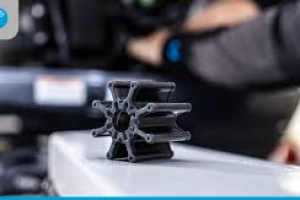Outboard engines are the lifeblood of boats, powering them through serene waters and challenging waves. To ensure uninterrupted adventures on the water, it’s essential to conduct regular maintenance on your outboard engine. This comprehensive guide will walk you through the intricacies of outboard engine maintenance, covering everything from pre-maintenance inspection to propeller care.
1. Pre-Maintenance Inspection
Before diving into maintenance tasks, start with a comprehensive inspection:
- Visual Inspection: Carefully examine the entire engine, checking for signs of wear and tear, such as cracks, corrosion, or loose components. Inspect gaskets, seals, and hoses for any leaks or damage.
- Fluid Levels: Check oil, fuel, coolant, and hydraulic fluid levels. Ensure they’re at the recommended levels and top up if necessary.
- Propeller Condition: Examine the propeller for damage, such as dents, bends, or corrosion. Also, check for any debris wrapped around the propeller shaft.
2. Changing Engine Oil
Regular oil changes are vital for engine health:
-
Step 1: Warm Up the Engine: Run the engine for a few minutes to warm up the oil, making it easier to drain.
-
Step 2: Drain the Oil: Place an oil pan beneath the engine and remove the drain plug to drain the oil completely.
-
Step 3: Replace the Oil Filter: Install a new oil filter after removing the old one and lubricating the gasket with fresh oil.
-
Step 4: Refill with Fresh Oil: Add the manufacturer-recommended oil to the engine, checking the oil level with the dipstick.
3. Flushing the Cooling System
Flushing the cooling system removes salt, debris, and sediment:
-
Step 1: Connect the Hose: Attach a garden hose to the flushing port on the engine.
-
Step 2: Start the Engine: Turn on the hose and start the engine, letting it run for a few minutes to flush out impurities.
-
Step 3: Turn Off the Engine: After flushing, turn off the engine and disconnect the hose.
-
Step 4: Drain Remaining Water: Allow any remaining water to drain out of the engine by removing the flushing hose.
4. Spark Plug Maintenance
Ensure proper ignition with well-maintained spark plugs:
-
Step 1: Remove Spark Plug Wires: Carefully disconnect the spark plug wires and remove the old spark plugs.
-
Step 2: Inspect Spark Plugs: Examine the spark plugs for wear, fouling, or damage.
-
Step 3: Install New Spark Plugs: Replace old spark plugs with new ones and reconnect the spark plug wires.
5. Fuel System Inspection
Keep your fuel system clean and efficient:
-
Step 1: Inspect Fuel Lines: Check fuel lines and connections for leaks, cracks, or damage.
-
Step 2: Check Fuel Filter: Examine the fuel filter for dirt or clogs and replace if necessary.
-
Step 3: Add Fuel Stabilizer: If storing the boat, add a fuel stabilizer to prevent fuel degradation.
-
Step 4: Run Engine: Start the engine and let it run to circulate the stabilized fuel through the system.
6. Propeller Maintenance
Maintain optimal performance with a well-maintained propeller:
-
Step 1: Remove Propeller Nut and Washer: Use appropriate tools to remove the propeller nut and washer.
-
Step 2: Inspect Propeller: Check the propeller for damage and replace or repair as needed.
-
Step 3: Grease Propeller Shaft: Apply marine-grade grease to the propeller shaft before reinstalling the propeller.
Conclusion
Regular maintenance is essential for keeping your outboard engine running smoothly and reliably. By following this comprehensive guide, you can ensure your engine performs at its best, providing many enjoyable hours on the water.

